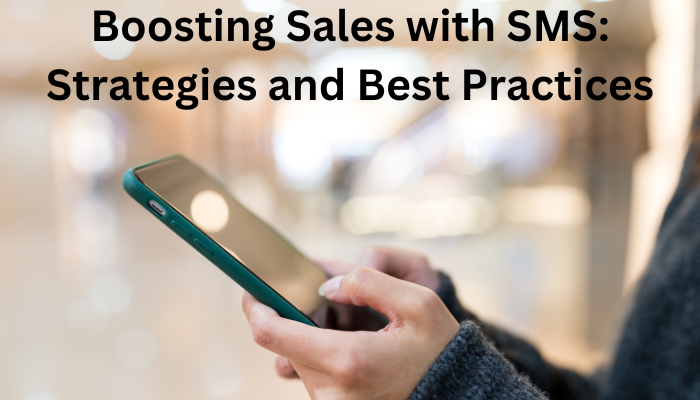
Boosting Sales with SMS: Strategies and Best Practices
April 16, 2024 Comment off
In the fast-paced world of sales and marketing, staying ahead of the curve is imperative for businesses to thrive. With the ever-evolving landscape of digital communication, leveraging SMS (Short Message Service) has emerged as a powerful tool for boosting sales and engaging customers effectively. In this article, we delve into the strategies, best practices, and real-world examples of how businesses can harness the potential of SMS to drive revenue and foster customer relationships.
The Power of SMS in Sales
In an era dominated by smartphones, SMS remains a ubiquitous and reliable means of communication. Its unparalleled reach and high open rates make it an ideal channel for businesses to connect with their target audience. According to recent statistics, SMS boasts an impressive open rate of over 90%, far surpassing that of email marketing. Moreover, with people increasingly relying on their mobile devices for everyday tasks, SMS provides a direct line to consumers, ensuring messages are seen and acted upon promptly.
Crafting Effective SMS Campaigns
The key to successful SMS marketing lies in crafting compelling and relevant messages that resonate with your audience. Here are some strategies to consider:
- Personalization: Tailor your messages to individual preferences and behaviors to enhance engagement. Use customer data to personalize offers, recommendations, and promotions, demonstrating that you understand their needs and preferences.
- Clear Call-to-Action (CTA): Clearly communicate the desired action you want recipients to take, whether it’s making a purchase, visiting your website, or redeeming a coupon. A concise and compelling CTA increases the likelihood of conversion.
- Timing is Everything: Timing plays a crucial role in the success of your SMS campaigns. Send messages at opportune moments when recipients are most likely to be receptive, such as during lunch breaks, evenings, or weekends. Avoid bombarding customers with messages during inconvenient times to prevent annoyance.
- Segmentation: Divide your audience into segments based on demographics, purchase history, or engagement level. This allows for targeted messaging tailored to the specific needs and interests of each segment, maximizing relevance and effectiveness.
Real-World Examples
Let’s explore how businesses have effectively utilized SMS to drive sales and achieve their marketing goals:
- Retail: A clothing retailer implemented an SMS campaign offering exclusive discounts to customers who had previously made a purchase. By sending personalized messages with unique discount codes, they incentivized repeat purchases and saw a significant boost in sales within a short timeframe.
- E-commerce: An online electronics store utilized SMS to alert customers about flash sales and limited-time offers on popular products. By sending timely notifications directly to subscribers’ phones, they created a sense of urgency, prompting immediate action and driving sales.
- Hospitality: A hotel chain implemented SMS as part of its customer engagement strategy, sending automated booking confirmations, check-in reminders, and personalized recommendations for local attractions. This streamlined communication enhanced the overall guest experience, leading to positive reviews and increased bookings.
Best Practices for Success
To maximize the effectiveness of your SMS campaigns, adhere to the following best practices:
- Obtain Consent: Ensure compliance with regulations such as GDPR and TCPA by obtaining explicit consent from recipients before sending marketing messages. Respect their preferences and provide easy opt-out options to maintain trust and goodwill.
- Keep it Concise: SMS is inherently limited in characters, so keep your messages concise and to the point. Focus on delivering value and conveying your message succinctly to capture attention and drive action.
- Monitor and Analyze: Continuously monitor the performance of your SMS campaigns, analyzing metrics such as open rates, click-through rates, and conversion rates. Use this data to refine your strategies, optimize messaging, and identify areas for improvement.
- Integrate with Other Channels: Integrate SMS seamlessly with your overall marketing strategy, complementing other channels such as email, social media, and in-store promotions. Consistent messaging across channels reinforces brand identity and enhances the customer experience.
In conclusion, SMS presents a lucrative opportunity for businesses to enhance their sales efforts and foster meaningful connections with customers. By adopting strategic approaches, leveraging data-driven insights, and adhering to best practices, businesses can harness the full potential of SMS to drive revenue, increase engagement, and stay ahead in today’s competitive marketplace.